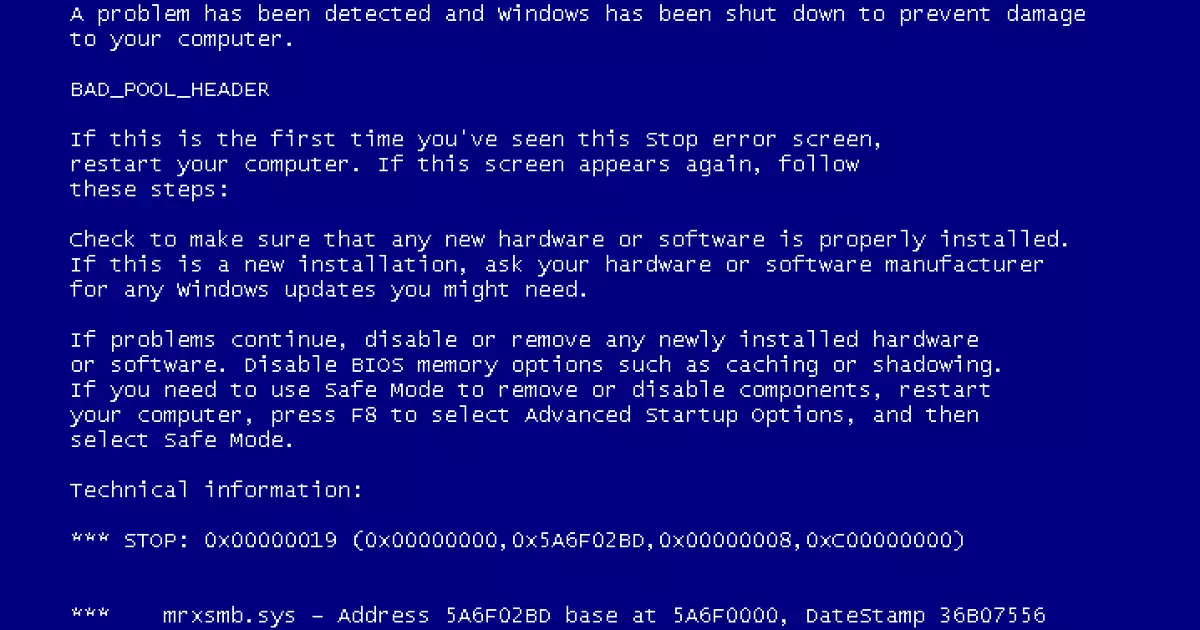In the dimly lit corners of music festivals, where people escape the daily monotony for fleeting moments of joy, a unique tradition has emerged. Picture this: you’re nestled in your sleeping bag, cocooned against the cool night air, when a distant rumble begins to fill the atmosphere. As the sound surges closer, an unmistakable chant pierces the night – rows of festival-goers collectively hurling the cheeky word ‘bollocks’ into the ether. This cacophony evolves into a spontaneous cultural phenomenon, a bonding experience that traverses the individuality of each person present. The inherent spirit of that moment captures the essence of human connection, a shared acknowledgment of the absurdities of life.
In many ways, this chaotic chant mirrors the collective experience of dealing with one of technology’s most infamous yet oddly beloved features: the Windows Blue Screen of Death (BSOD). Once a source of extreme frustration, the BSOD has transformed into an icon of shared digital misfortune, akin to an anthem of technological tribulations. Its very presence evokes a visceral reaction, as users around the world unite in their exasperation when faced with this stark reminder of digital failure.
From Blue to Black: Microsoft’s Significant Change
In a bold move, Microsoft announced the retirement of the BSOD in favor of a new Black Screen of Death (BlackSOD). This transformation, part of an effort to provide clearer diagnostics for users encountering system errors, indicates a significant shift in how the tech giant views user experience. The BlackSOD isn’t merely an aesthetic change; it’s symbolic of Microsoft’s attempt to redefine the narrative surrounding system errors. According to David Weston, Microsoft’s VP of enterprise and OS security, the goal is to enhance clarity and provide actionable information, ensuring that users can diagnose and resolve issues more effectively.
In an era riddled with digital frustrations, Microsoft’s initiative to revamp the familiar blue screen signals a commendable effort to humanize technology. Users want more than just a cryptic error message—they desire guidance and understanding of the problems their systems encounter. However, this raises questions: Can new technology really provide the clarity and support that users seek? Or will the new interface merely serve as a polished facade over the age-old troubles that exist beneath the surface?
Connecting Past and Present Tech Experiences
Reflecting on the historical significance of system errors, the BSOD has been a staple in the tech narrative for nearly four decades. It emerged alongside the first version of Windows in 1985—a decade filled with technological advancements that laid the groundwork for the digital age. Just as festival-goers bask in the glow of camaraderie when shouting ‘bollocks,’ users across the globe have formed an unspoken alliance while grappling with their computer failures. The phenomenon transcends age, culture, and geography; it connects those familiar with the woes of technology through shared adversity.
The cultural context surrounding these error messages can also be drawn in parallel with iconic gaming failures. Gamers will remember the infamous red ring of death on the Xbox 360, an ominous harbinger of despair that led to countless gamers being sidelined from their immersive adventures. These moments foster community, creating narratives that are shared in gaming forums, social media, and beyond. Similarly, the wheelchair-bound error messages of tech companies evoke a collective empathy that becomes ingrained in the fabric of popular culture.
Corporate Responsibility and the Tech Landscape
Amidst the celebratory fanfare of changes to the BlackSOD, it’s important to scrutinize the broader implications of corporations like Microsoft in today’s world. In May, the tech giant faced backlash for supplying AI technology to the Israeli military during the ongoing conflict in Gaza, a move that sparked heated discussions about ethical responsibilities in the tech landscape. As corporations wield unprecedented power through technology, they must reckon with the consequences of their choices, ensuring that innovation is not compromised by ethical oversights.
Furthermore, the announcement of job cuts affecting 3% of Microsoft’s workforce adds a layer of complexity to their narrative. In conjunction with reporting staggering profits of $88 billion in 2024, it begs the question: who truly benefits from this monumental success? As technology becomes increasingly advanced, the disparity between corporate profit and employee experience remains glaringly evident, highlighting a dissonance that needs addressing as the industry evolves.
As we transition into this new era of tech, the hope remains that brands like Microsoft will recognize the human element at the heart of their innovations. While the BlackSOD may serve a practical purpose, a more profound understanding of user experiences must accompany such shifts. Technology should not only resolve issues but foster connections, whether in music festivals or on the screens we depend upon every day.


Leave a Reply